Compare the container classes of Lists Queuesand Stacks and
Compare the container classes of Lists, Queues,and Stacks and Sets, Maps, and Priority Queues
and describe what each one does and how, and write a C++ example of the each type that would be suited for that structure.
Submit the cpp files.
Thank you
Solution
Solution:
The container is a holder object which is used to store the collection of different objects and it is implemented as class templates.
List:
List is a sequence container, It performs a insert and delete operation in a constant time with in sequence and it can iterate both directions.
It is implemented in double linked list and stores the element in different and unrelated locations.
Example code:
#include <iostream>
#include <list>
using namespace std;
int main(void)
{
// create list container
list<char> lstelm;
char chr;
cout<<\"elm list is: \";
// insert elements from \'a\' to \'z\'
for( chr = \'a\'; chr <= \'z\'; ++ chr)
lstelm.push_back( chr);
// print and remove the element from list
while(!lstelm.empty())
{
cout<<lstelm.front()<<\' \';
lstelm.pop_front();
}
cout<<endl;
return 0;
}
Queues:
Queue is a container specially designed to perform the operation First in First Out, the elements are inserted into one end and removed from another end.
Example code:
// STL queue
#include <queue>
#include <vector>
#include <list>
#include <iostream>
using namespace std;
int main(void)
{
//Declare the queue and push the value
queue <int, vector<int> > qu3;
qu3.push(110);
// copies elements from a container
list<int> li;
li.push_back(13);
li.push_back(17);
li.push_back(12);
li.push_back(19);
queue <int, list<int> > qu2(li);
cout<<\"The front of queue qu2 is \"<<qu2.front()<<endl;
cout<<\"The back of queue qu2 is \"<<qu2.back()<<endl;
return 0;
}
Stacks:
Stack is a container specially designed to perform the operation Last in First Out, the element insertion and deletion is performed in one end.
Example code:
// C++ STL stack
#include <stack>
#include <iostream>
using namespace std;
int main(void)
{
stack <int> stk1;
int jval;
// push data into stack
cout<<\"Push operation in stack...\"<<endl;
stk1.push(2);
jval = stk1.top();
cout<<jval<<\' \';
stk1.push(19);
// get top of the stack
jval = stk1.top();
cout<<jval<<\' \';
stk1.push(2);
jval = stk1.top();
cout<<jval<<\' \';
stk1.push(13);
jval = stk1.top();
cout<<jval<<\' \'<<endl;
stack <int>::size_type istk;
istk = stk1.size();
// print some data
cout<<\"The stack length is \"<<istk<<endl;
istk = stk1.top();
cout<<\"The top element of the stack is \"<<istk<<endl;
stk1.pop();
istk = stk1.size();
cout<<\"The stack length after pop is \"<<istk<<endl;
istk = stk1.top();
cout<<\"The element at the top of the stack is \"<<istk<<endl;
return 0;
}
Sets:
Set is a container, it stores a unique elements in a specific order.
Example code:
#include <set>
#include <iostream>
using namespace std;
char main(void)
{
// iterators
set <char>::iterator st_Iter;
// empty set st0
set <char> st0;
// empty set st1
set <char, less<char> > st11;
// insert or push data
st11.insert(\'a\');
st11.insert(\'b\');
st11.insert(\'e\');
st11.insert(\'F\');
st11.insert(\'h\');
st11.insert(\'J\');
// create a set by copying the range st11
set <char>::const_iterator st1_PIter, st1_QIter;
st1_PIter = st11.begin();
st1_QIter = st11.begin();
st1_QIter++;
st1_QIter++;
set <char> st2(st1_PIter, st1_QIter);
cout<<\"st5 set data: \";
for(st_Iter = st2.begin(); st_Iter != st2.end(); st_Iter++)
cout<<\" \"<<*st_Iter;
cout<<endl;
return 0;
}
Maps:
Map is an associative container; the elements stored in the map as the combination of key value and mapped value in a specific order.
Example code:
#include <map>
#include <iostream>
using namespace std;
int main(void)
{
// simple map pair<int, int> to pairint
typedef pair<int, int> pairint;
// iterators
map<int, int>::iterator mp0_Iter, mp1_Iter;
map<int, int, greater<int> >::iterator mp2_Iter;
// create an empty map map1
map <int, int, less<int> > map1;
map1.insert(pairint(11, 23));
map1.insert(pairint(13, 33));
map1.insert(pairint(13, 41));
map1.insert(pairint(12, 33));
map1.insert(pairint(16, 35));
map1.insert(pairint(19, 35));
//map with the allocator of map
map <int, int>::allocator_type mp1_Alloc;
mp1_Alloc = map1.get_allocator();
map <int, int> mp3(less<int>(), mp1_Alloc);
mp3.insert(pairint(1, 10));
mp3.insert(pairint(2, 12));
// map mp5 by copying the range map1
map <int, int>::const_iterator mp1_PIter, mp1_QIter;
mp1_PIter = map1.begin();
mp1_QIter = map1.begin();
mp1_QIter++;
mp1_QIter++;
map <int, int> mp5(mp1_PIter, mp1_QIter);
cout<<\"map1 map data: \";
for(mp1_Iter = map1.begin(); mp1_Iter != map1.end(); mp1_Iter++)
cout<<\" \"<<mp1_Iter->second;
cout<<endl;
return 0;
}
Priority Queues:
Priority Queue is a type of a container adaptor, it is specially designed to have first element always greatest in the elements it contains.
Example code:
#include <queue>
#include <vector>
#include <deque>
#include <list>
#include <iostream>
using namespace std;
int main(void)
{
// Declares priority_queue
priority_queue <int, deque <int> > mypq1;
cout<<\"mypq1 = \";
mypq1.push(212);
mypq1.push(250);
mypq1.push(120);
// print the values
while (!mypq1.empty())
{
cout<<mypq1.top()<<\" \";
mypq1.pop();
}
cout<<endl;
system(\"pause\");
return 0;
}
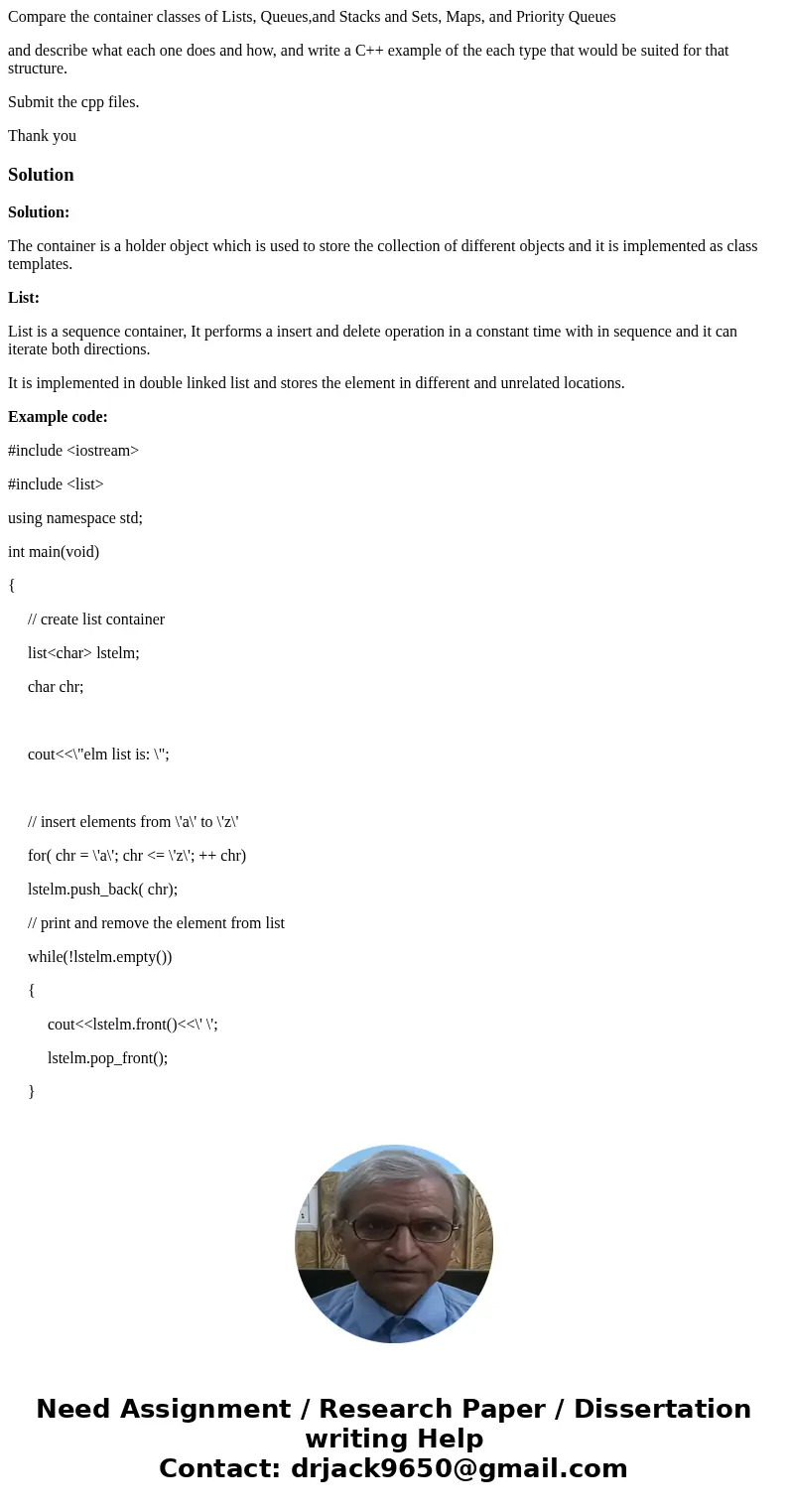
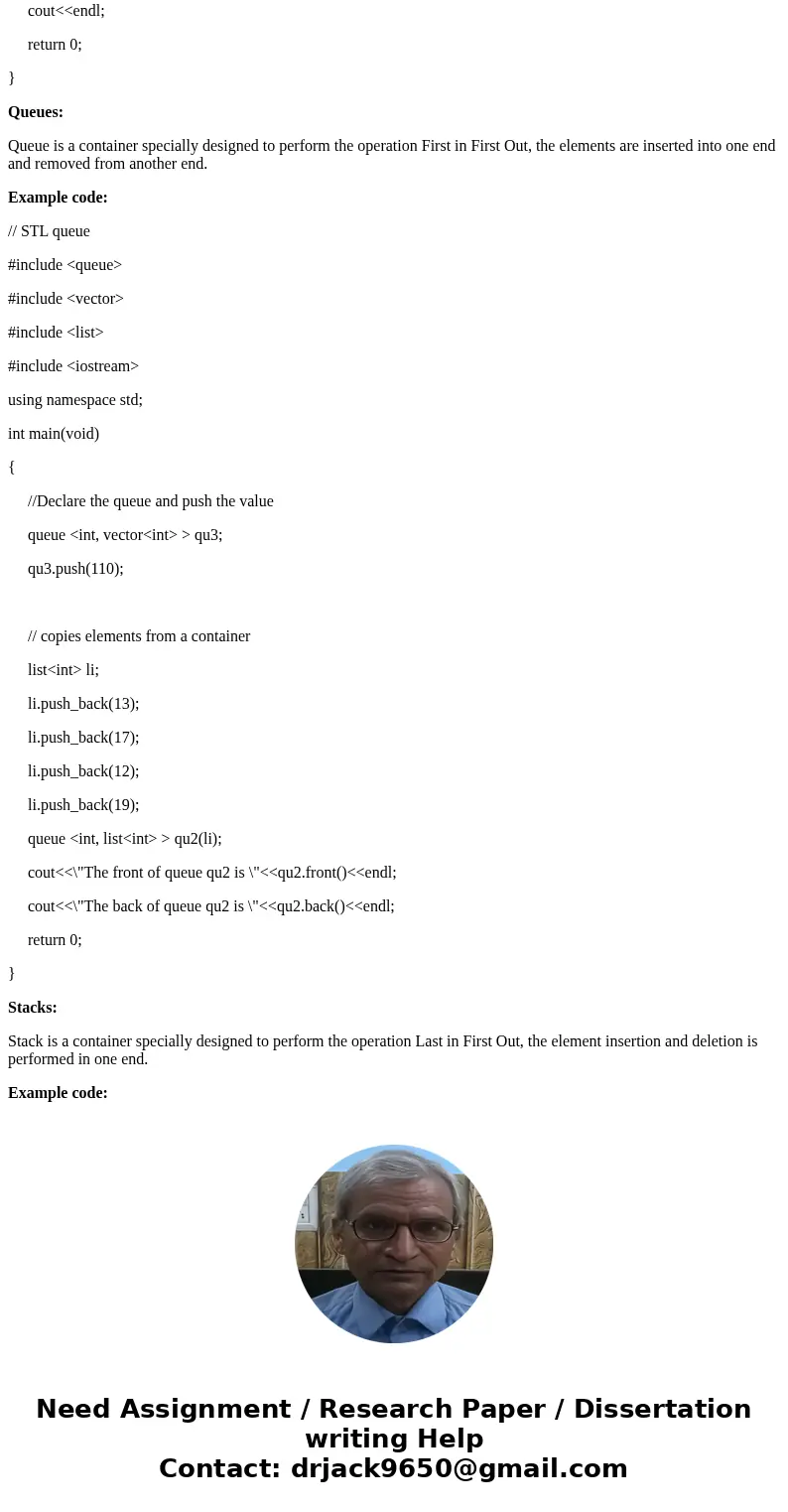
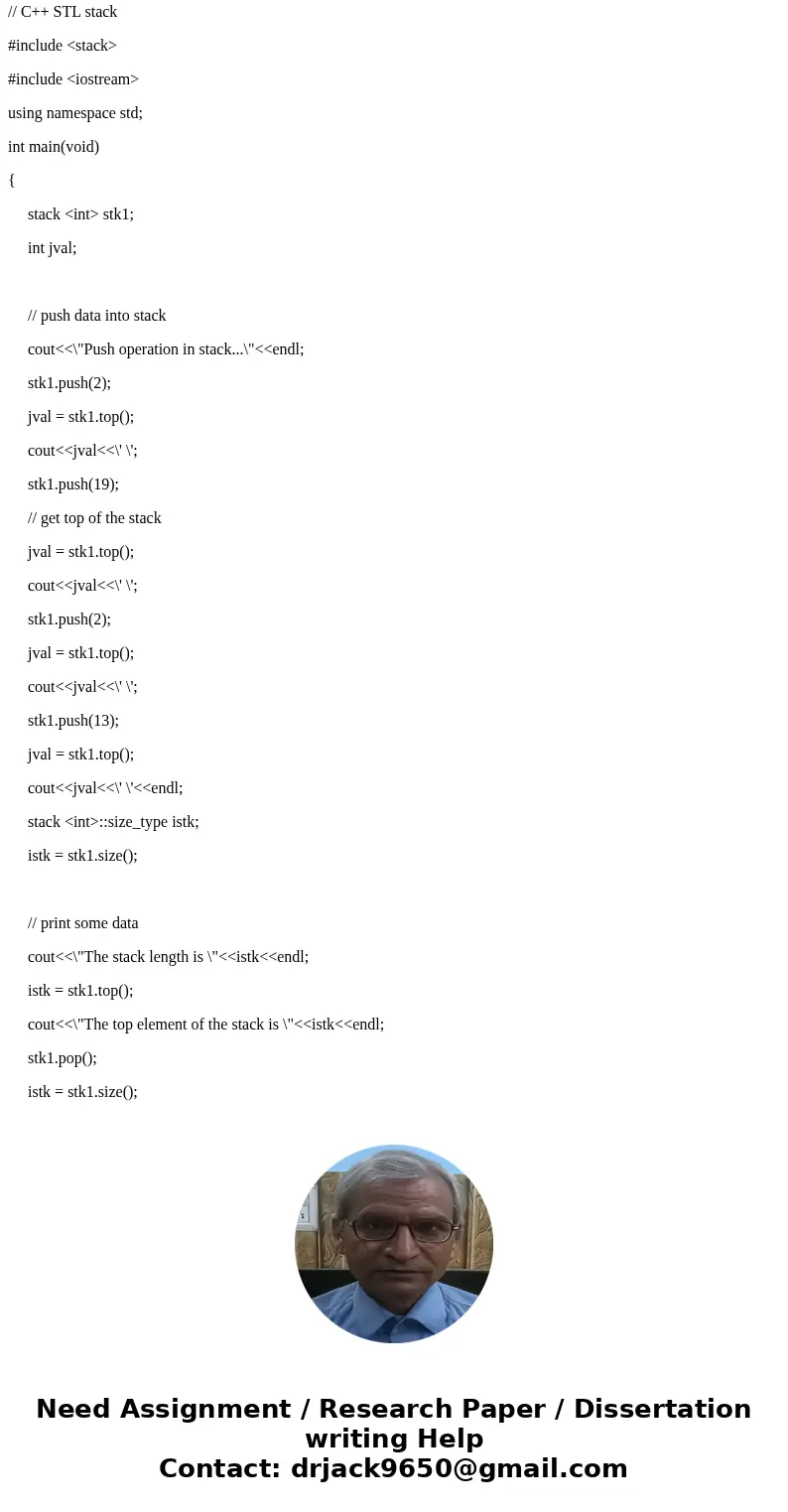
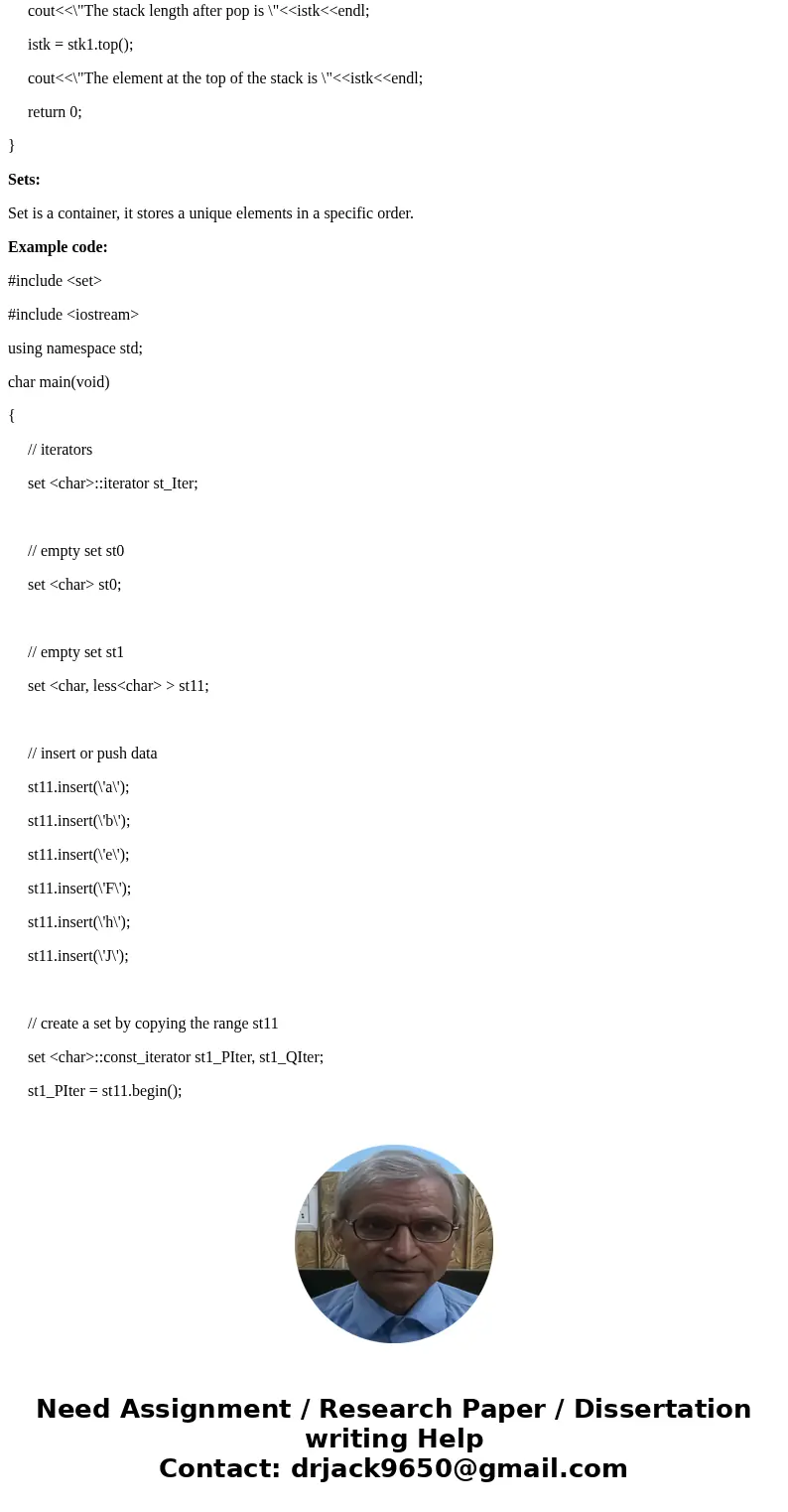
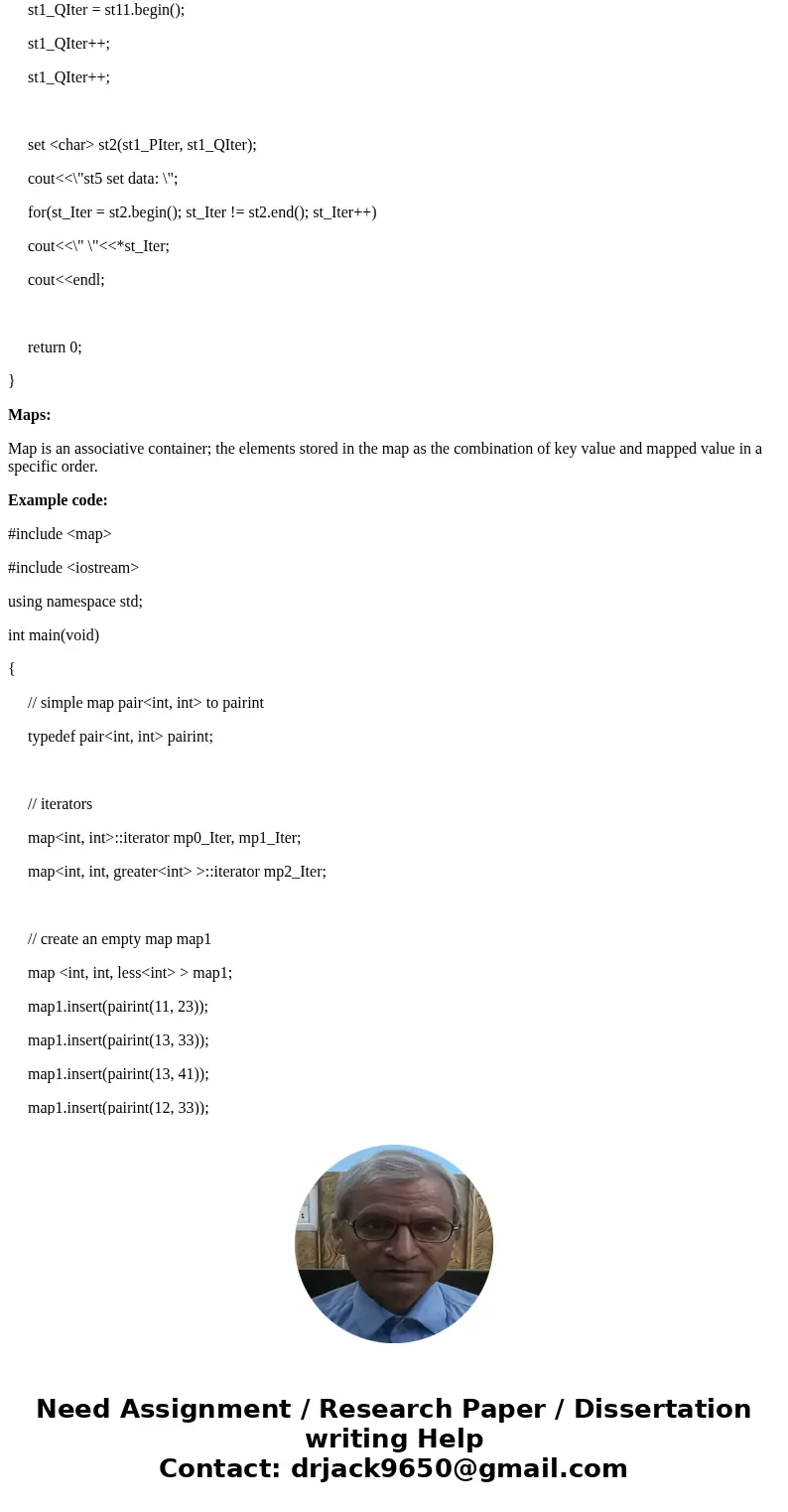
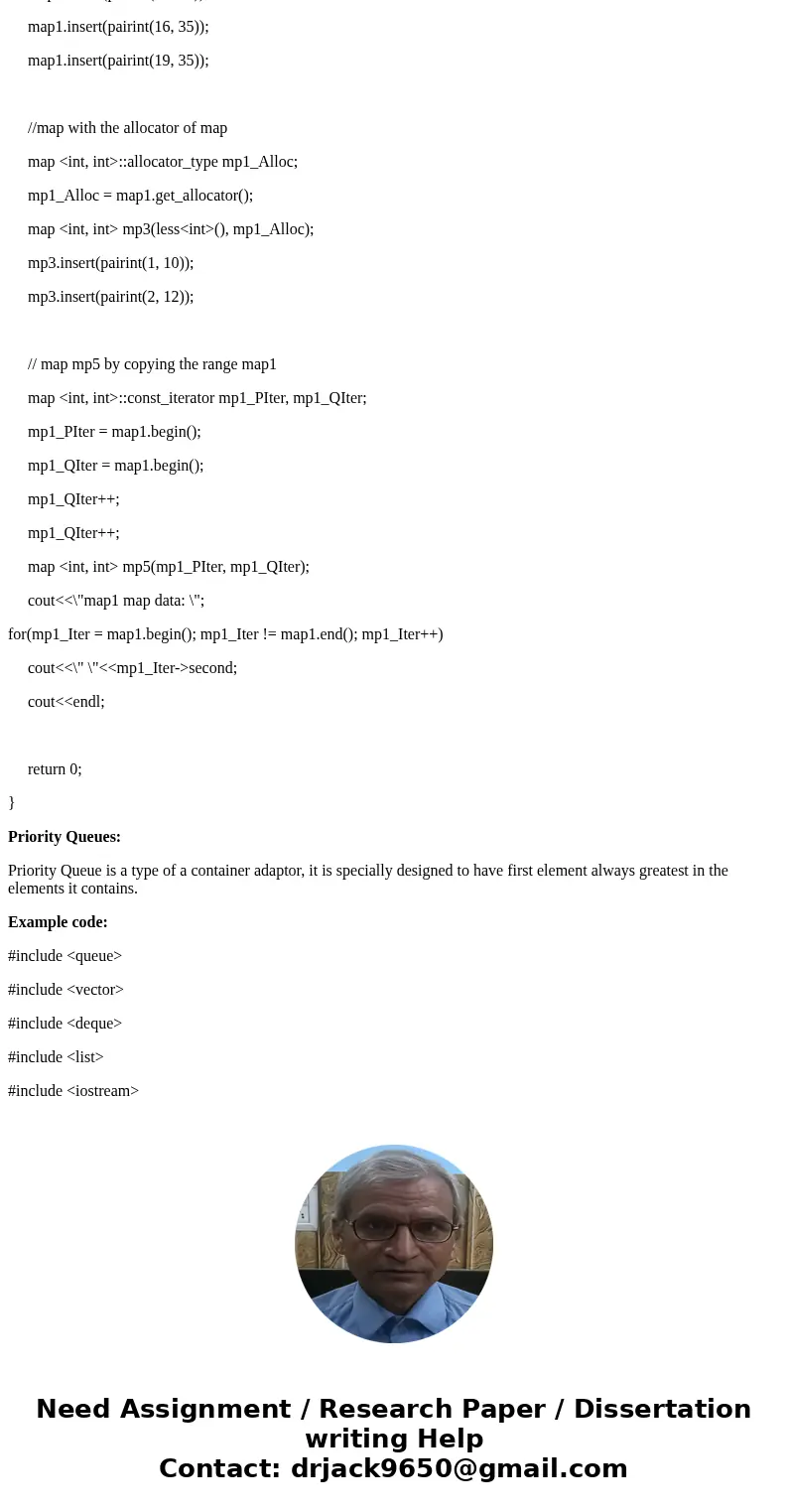
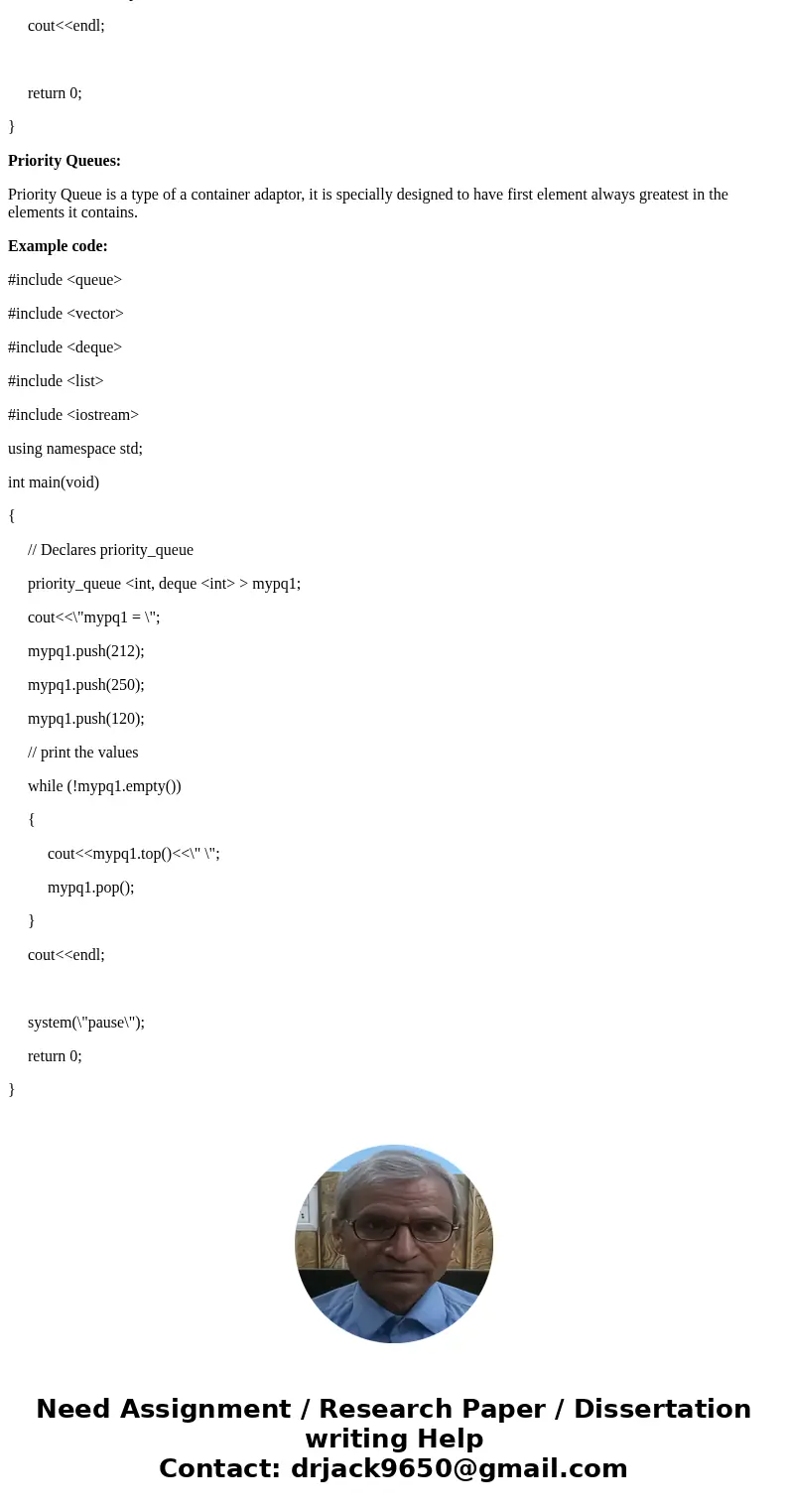
 Homework Sourse
Homework Sourse